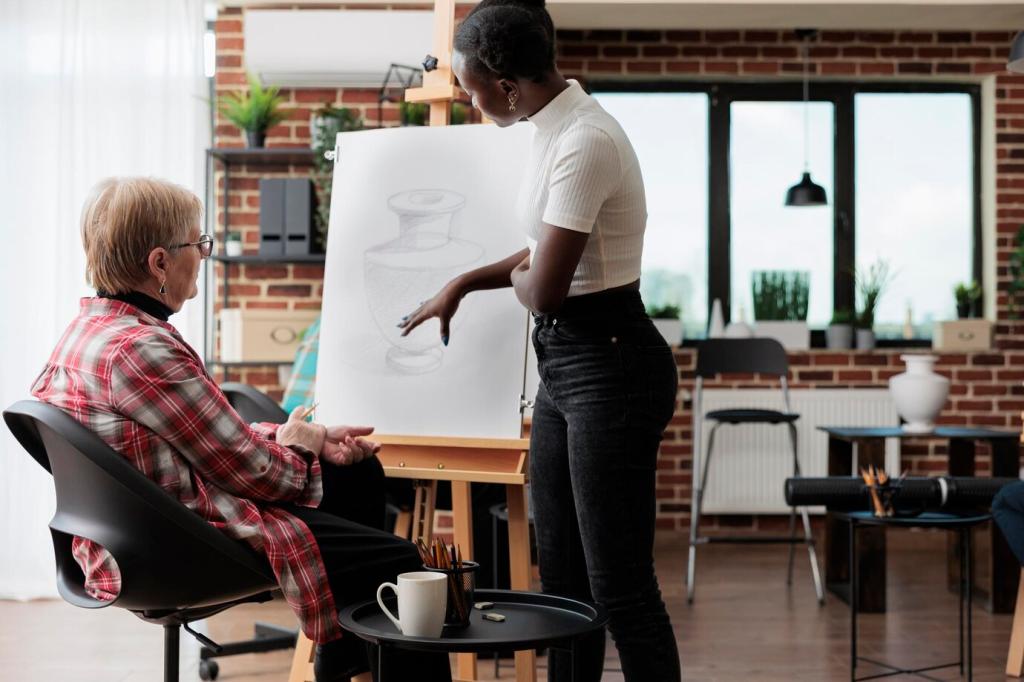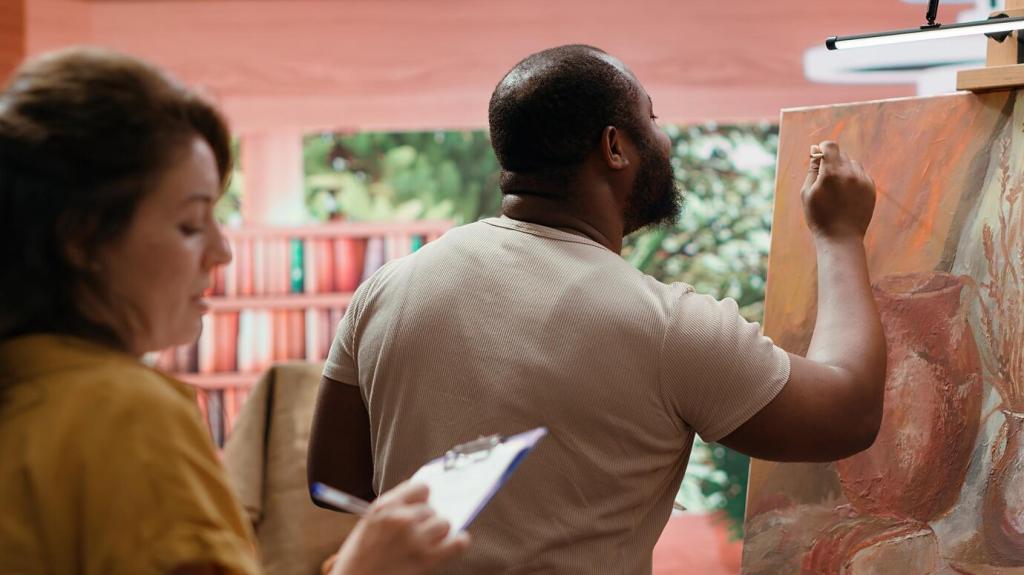Wet-on-Wet Foundations for Soft Petals
Glaze the petal area with clean water, then wait for a silky sheen—shiny but not puddled. Drop in color as the shine softens to avoid cauliflowers. Practice on a scrap to learn your room’s drying pace. Share your timing observations; they’ll help others calibrate their own wet-on-wet rhythm.
Wet-on-Wet Foundations for Soft Petals
Drop Quinacridone Rose into the damp base, then whisper Ultramarine near the shadow edge to create a natural violet transition. Tilt your board so gravity paints soft blends for you. Add a second color while damp, not soaked. Post your experiments with color charging, and tell us which blend made your petals sing.








